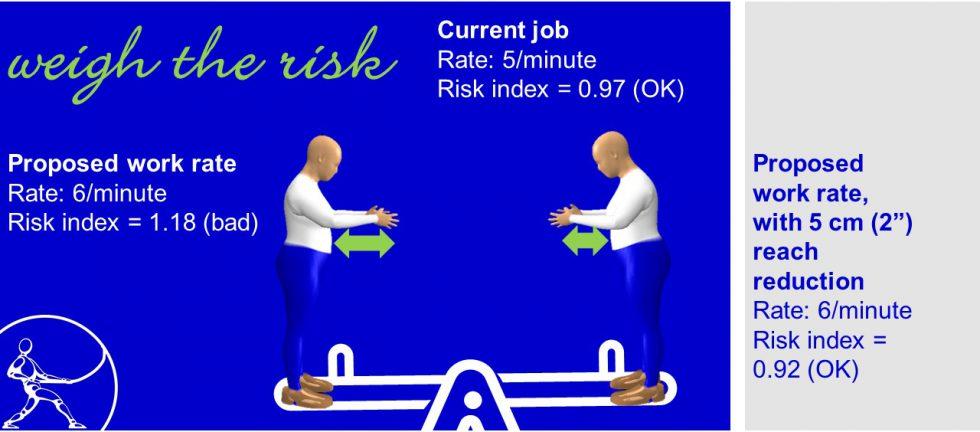Every ergonomist considers the effect of production rate on injury risk. In school, we learn that injury risk is related to repetitive or sustained exposure to forceful, awkward postures. Presented with forceful, awkward tasks that seem impossible to change, the logical suggestion is to limit exposure by slowing things down. Reducing the work rate gives the muscles time to recover. I would wager that every new ergonomist has, at least once, suggested that slowing the line down (or providing more workers) would reduce injury risk.
But at Taylor’d Ergonomics, these suggestions that pop up in new ergonomists’ reports get edited out before a client ever sees them. Why? Because we see ourselves as partners with our clients – we want to help you to optimize productivity, and slowing the line or doubling up on manpower will rarely accomplish that. There are always other ways to mitigate risk, even when, at first glance, changing the work rate appears to be the only option. Postures can often be improved by introducing height adjustability, using diverters, or providing grip extenders. Force can be reduced with mechanical assists or simple machines. And, when necessary, even the rate-driven parameters can be managed through job rotation, line balancing, or job enlargement.
If you need to understand the difference, in terms of injury risk, between a current and a proposed work rate, we can help with that – we can calculate a risk index for the existing job, and then “play around” with production rates to help you understand the impact on risk. We can also help you figure out what ergo improvement would effectively offset the proposed rate increase. The image above represents an example of a job where a worker reaches forward, 5 times per minute, to handle an object that weighs 2 kg (5 lbs). If you wanted to increase production to 6 per minute (a 20% increase), the risk would exceed guidelines. But if you can reduce the forward reach (2”), you can keep demands within guidelines, even at the faster pace. We’ve bartered, in a sense, to keep workers safe while you achieve your productivity goals. The recommendation to slow things down won’t come from us, but we might ask for changes that off-set potentially harmful rate increases.
I said earlier that “slowing the line will rarely accomplish” productivity improvements. However, it’s not inconceivable that a slower line might be more efficient. During mock-ups for a recent project, we observed that workers who couldn’t keep up with a faster pace made more mistakes, reached much further up and down the conveyor, and caused more line stoppages. The design and production teams settled on a slower pace.
Need some help managing risk as you attempt to optimize productivity? Our quantitative approach might be just what you need.
Want to bring a new ergonomist on-board, with an experienced mentor who will foster a quantitative approach, and ensure that recommendations align with your company’s goals? Check out our “OSE+” program, which launches this summer, when the ergo grads are looking for jobs.


